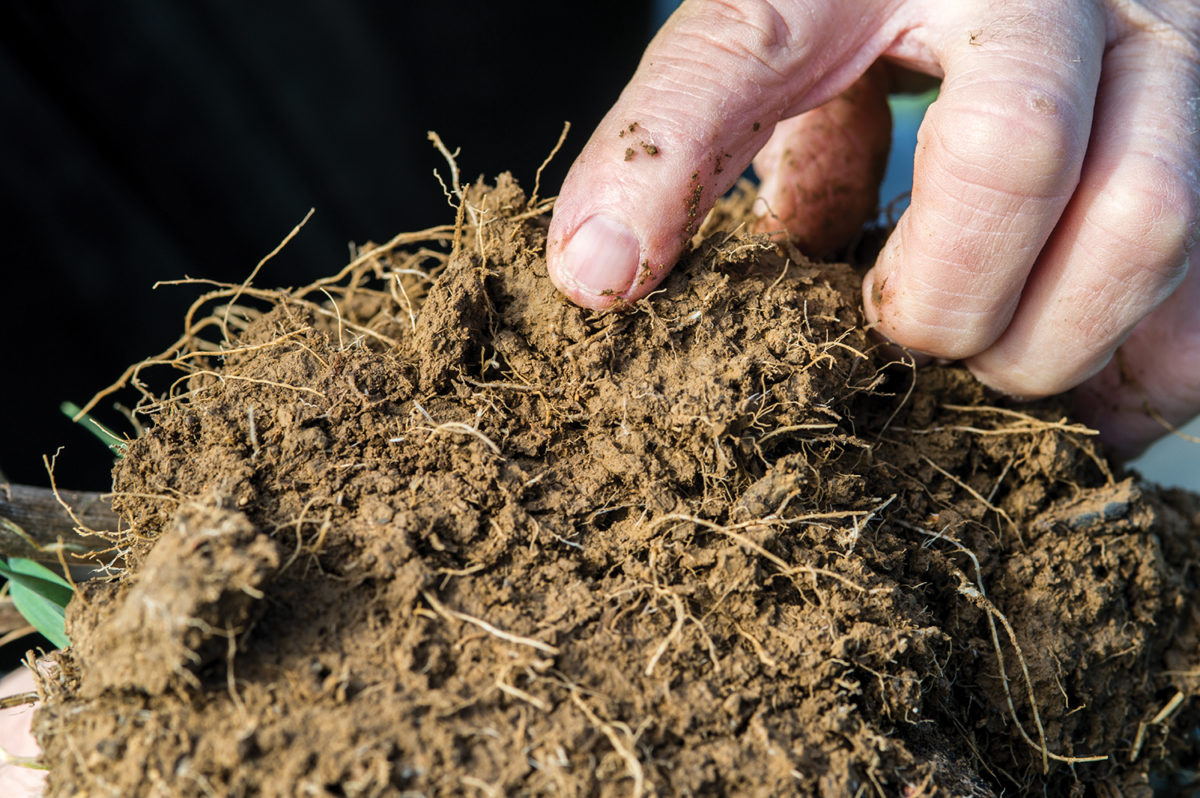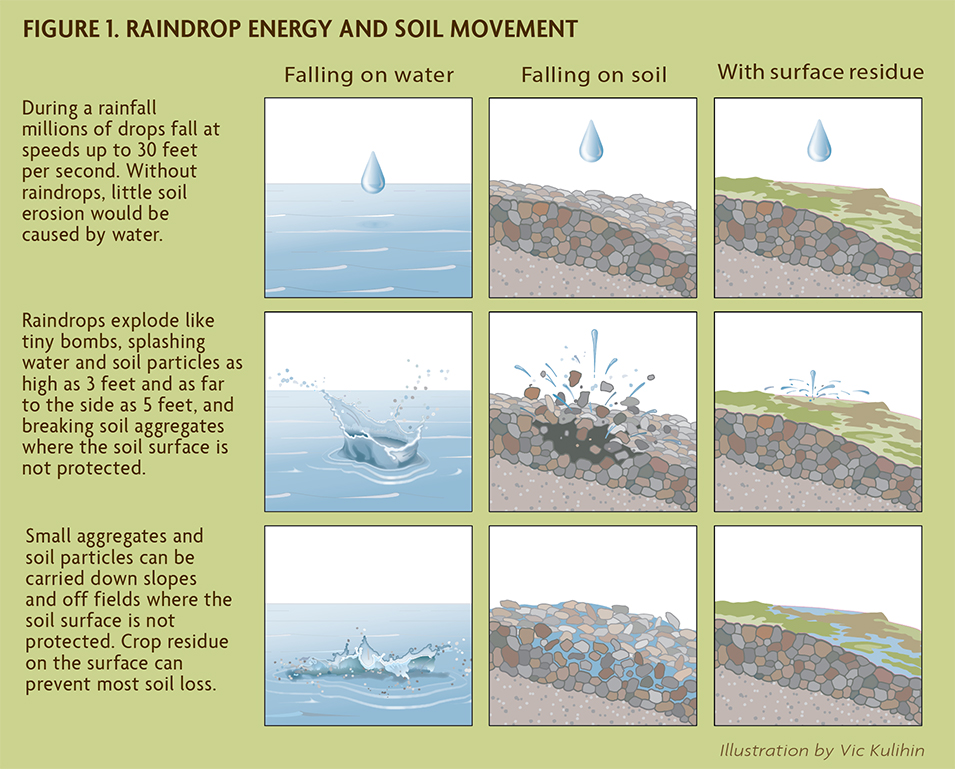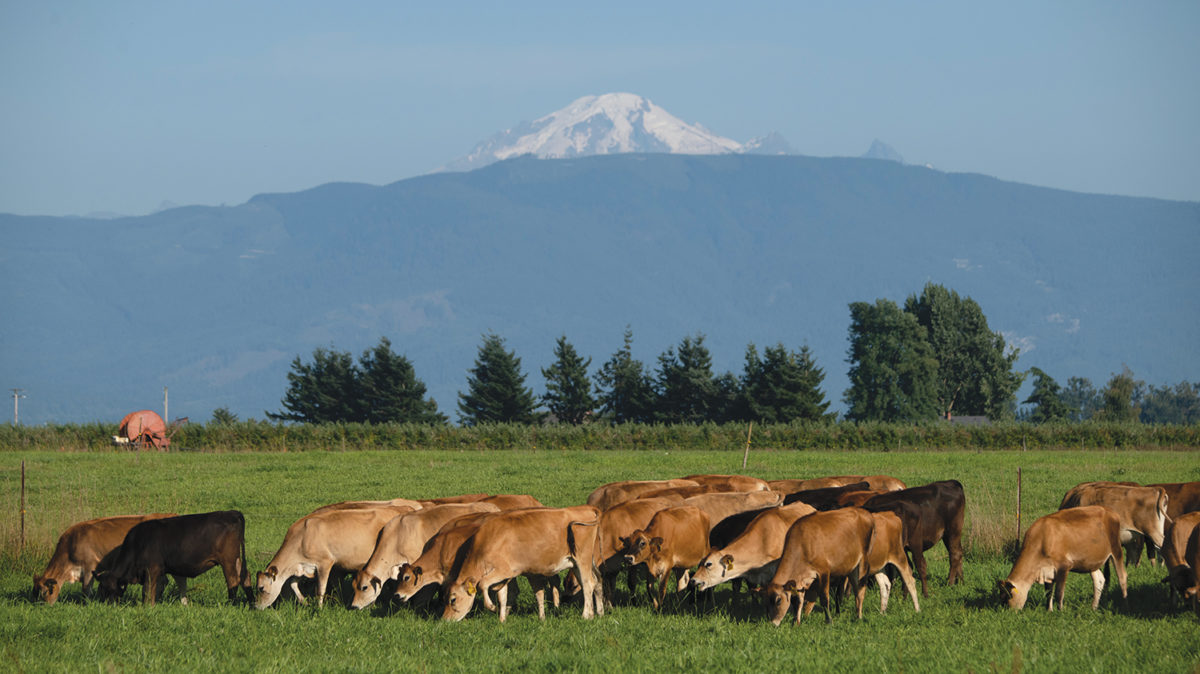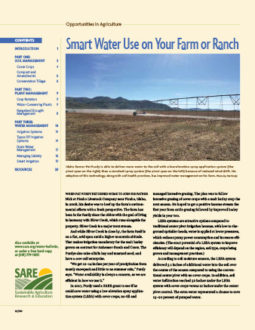
Think of the soil as a sponge: it absorbs and holds water, and it reaches a point where it’s full and cannot hold any more. Unlike a real sponge, though, you can change the amount of water that soil can hold through the way you manage your soil. However, you are somewhat limited by your soil’s texture. Keep in mind, finer soils that have a high percentage of silt and clay particles tend to hold more water than coarse, sandy soils.
Otherwise, practices that add organic matter and improve soil structure, such as adding compost or cover cropping, will increase water infiltration and waterholding capacity while decreasing runoff and erosion. Such soils are porous and allow water to enter easily, rather than running off to streams and rivers. With poor tilth, soil aggregates break down, compaction increases, and aeration and infiltration drop.
Most soil-improving strategies work slowly over several years. In contrast, management practices that degrade soil are often immediately apparent. Working soil when it is too wet will quickly compact it and degrade its structure. Degraded soils do not absorb precipitation as quickly or hold as much, which leads to increased ponding and runoff of excess water when it rains.
Organic matter also plays a vital role in soil health and water availability. Organic materials like cover crop residue or straw mulch applied to soils and maintained on the soil surface protect the soil from erosion (Figure 1). Vegetative cover deflects rain drops, while living roots and the exudates they produce hold soil together. Additionally, surface residues and mulches reduce evaporation and smother weeds, so plants have more water.

As organic matter increases, soil particles clump together and form aggregates. The spaces between aggregates are called macropores and are important for soil water dynamics. These larger pores contain open spaces that facilitate drainage and aeration. Smaller micropores fill with water and contribute to the total waterholding capacity of the soil. Plant residues and other organic amendments decompose and help bind soil particles together.
Strategies to increase organic matter content include:
- Spreading manure or letting livestock deposit manure in well-managed pastures.
- Applying composts from a variety of materials ranging from poultry litter to leaves.
- Rotating crops and using cover crops, which provide nutrient-rich residue after they die.
- Reducing tillage. Plowing breaks down soil aggregation and hastens organic matter loss.

